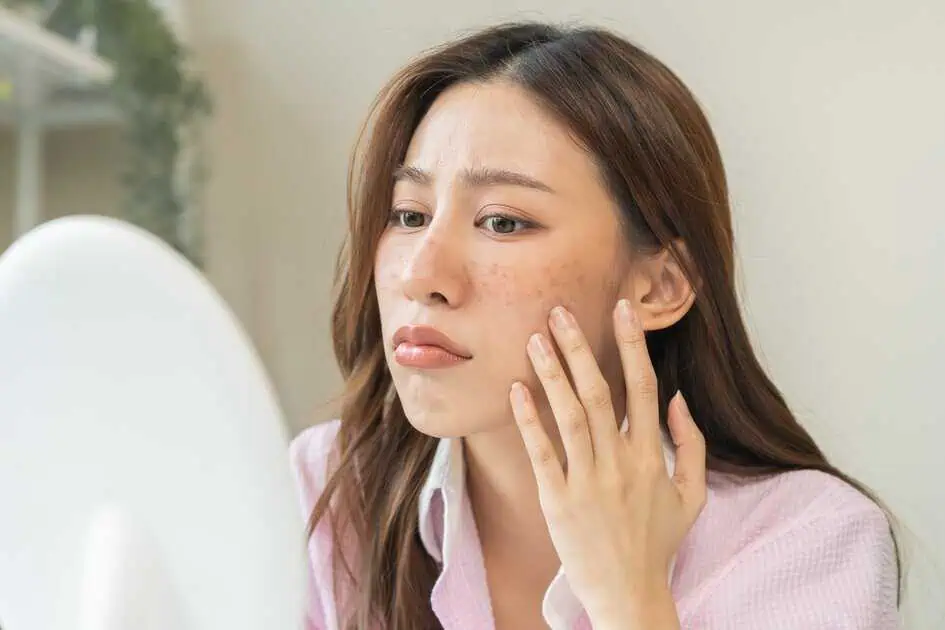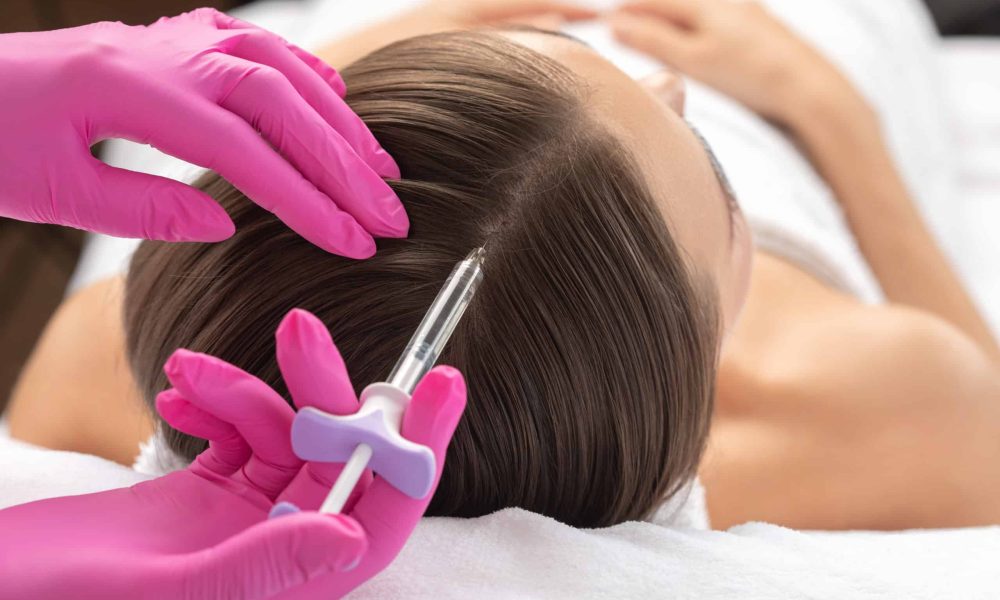

Nowadays, many people invest in hair growth treatment since it’s the only crown one can never take off. Due to several factors like metabolic imbalances, illness, or improper nutrition that interrupt the growth cycle, hair loss becomes a problem today. With the help of Microneedling, hair growth becomes possible as this treatment induces collagen formation, neovascularization, and growth factor production of treated areas. In the 1990s, Microneedling has first gained its reputation as a scar treatment. It has been used in many dermatologic conditions, such as alopecia areata and androgenetic alopecia (AGA). Microneedling is effective when successfully paired with other hair growth-promoting therapies, such as minoxidil, platelet-rich plasma, and topical steroids and shown to stimulate hair follicle growth.
It is a minimally invasive dermatological procedure that uses a device with tiny needles on the skin varying in size to create wounds into the skin for rejuvenation. The technology is often utilized to create small punctures in the scalp to stimulate collagen production, circulation, stem cells and increase the growth and thickness of new hairs. Some common uses of microneedling include treating scarring, acne, wrinkles, skin discoloration, and even stretch marks.
In addition, there are growth factors like these molecules Epidermal Growth Factor (EGF), Vascular Endothelial Growth Factor (VEGF), Fibroblast Growth Factor (FGF), and Platelet-Derived Growth Factor (PDGF), that support the tissue healing and regeneration process. Specifically, VEGF is responsible for angiogenesis or the development of new blood vessels and wound healing. Proper blood flow is necessary to deliver fluids, oxygen, nutrients, and immune mediators needed for tissue repair.Also, Microneedling may promote the absorption of products used to treat hair loss, such as minoxidil (Rogaine), topical steroid, and platelet-rich plasma. One, in particular, explored the potential benefits of microneedling when used with a topical corticosteroid to treat alopecia areata.
To better understand how microneedling for hair growth works, it’s important to have a foundation of knowledge on what potentially causes this hair loss. According to this study, hair growth induced by microneedling the scalp involves the following mechanism:
1. Platelet release derives growth factor, epidermal growth factors are increased through platelet activation and skin wound regeneration mechanism.
2. Activating stem cells in the hair bulge area under wound healing conditions caused by a derma roller.
3. Overexpression of hair growth-related genes vascular endothelial growth factor, B catenin, Wnt3a, and Wnt10 b.
Before the procedure, patients are advised to stay out of the sun and tanning booths for 2 weeks before their appointment. The treatment should not be given if Botox or dermal fillers have been injected into the treatment area within 2 weeks before treatment. At the same time, no Botox or dermal fillers 5-7 days afterward.
Also, all exfoliating products containing a scrub or acids should be discontinued 3 days before and 1 week after and should stop topical irritant agents for 2-7 days before treatment. Beforehand, patients should shampoo their hair and arrive at their appointment with clean hair (no product). A topical analgesic will be applied to the treatment area to increase comfort, and the treatment area will then be cleaned and disinfected per the protocol and divided into sections. The hair microneedling solution will be applied immediately before treatment and again to all treated sections at the end of the procedure. Moreover, this can be used for all skin and hair types, including treated hair—treatment generally books for 60 minutes.
After the treatment, minimal swelling, redness, and a stinging/sunburned sensation may be noted post-treatment immediately but will disappear within 1-3 days. A patient who wishes to see hair restoration should see results within 3-6 months but remain compliant with their treatment schedule and recommended products to maximize results.
In general, 4-6 treatments are needed to achieve optimal results, but the number of treatments varies from person to person, the size of the treatment area, and individual patient goals.
While microneedling allows skincare products to more deeply penetrate the skin, the procedure is not suggested to all patients since it can cause irritation and allergic reaction in some people. There may be slight pinkness or redness to the skin or a minor inflammation, itching, or stinging after microneedling, but these are just normal. However, it is recommended to see a doctor if inflammation, pain, or even infection occurs after the microneedling procedure. Other than that, bruising, oozing, redness, and swelling can also occur.
Since not everyone is the best candidate for microneedling for hair loss, this treatment should not be given to pregnant women, breastfeeding, and a history of acne or eczema. The same goes for blood thinners or hemophilia since it would cause too much bleeding. Those with conditions like diabetes that may inhibit proper wound healing should also avoid microneedling.To counter these side effects above, the patient should make sure that their provider uses a post-treatment serum specifically tested to be used with microneedling. The patient can do a patch test beforehand if the skin is sensitive. More importantly, microneedling procedures should only be performed by licensed professionals who specialize in skincare. Although this treatment isn’t an invasive or surgical procedure, generally, there aren’t as many risks involved.
Microneedling may be a promising hair loss treatment today that can help those seeking to prevent and treat hair loss. It has become a multipurpose cosmetic procedure that can benefit skin health, including the face or scalp. Studies that use microneedling alongside traditional therapies have presented favorable results in the short term.
At Taylered Aesthetics, they offer a microneedling treatment that uses AnteAGE MD® Hair Microneedling Solution, which incorporates recent advances in hair follicle science. It contains Bone Marrow Mesenchymal Stem Cell-derived cytokines, specially treated to influence signaling towards the Wnt-1a pathway for follicle regeneration. Ultimately, Taylered Aesthetics is a resource for men and women to indulge in self-care with a passion for skincare, science, medicine, and helping people feel and look their best.